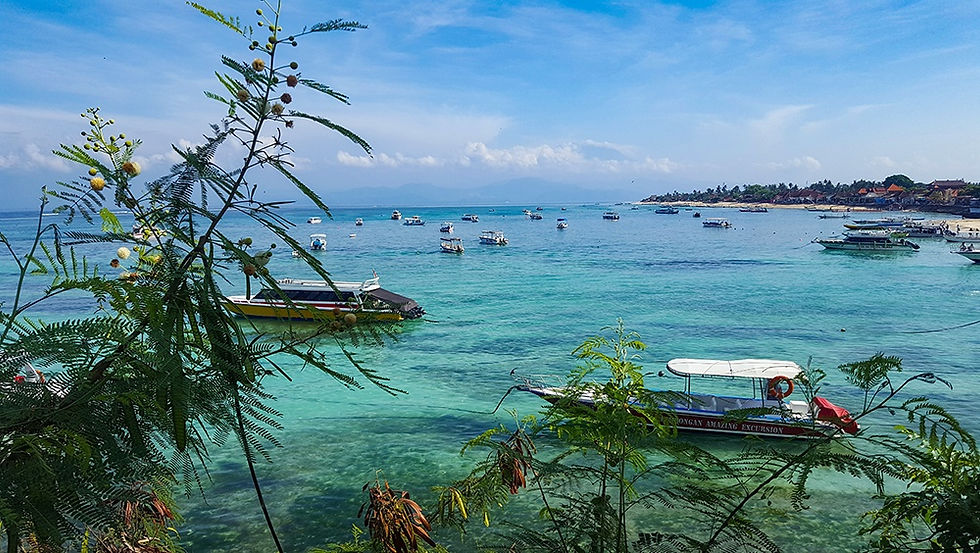Sacred Flames - Ubud’s Cremation Temple
- Shannon
- Sep 19
- 4 min read
Honouring Life and Death - The Spiritual Heart of the Monkey Forest
Located on the northeastern fringe of Ubud’s Sacred Monkey Forest Sanctuary, the Cremation Temple, known to the locals as Pura Prajapati, is far more than just a place of worship. Estimated to have been constructed around 1350AD, it is one of three major temples within the forest complex and plays a critical role in Bali’s intricate death rituals. The Hindu temple honours Hyang Widhi Wasa, the divine spirit that permeates all existence, in the form of Prajapati, the Lord of all born beings. While many visitors may overlook this solemn site in favour of the livelier, monkey filled pathways nearby, Pura Prajapati quietly holds centuries of spiritual weight and ancestral reverence beneath its moss covered stones.

Directly beside the temple lies a large cemetery, partially hidden beneath the jungle canopy and shrouded in offerings and silence. This burial ground serves as a temporary resting place for the deceased from the nearby village of Padangtegal. Because Balinese cremation ceremonies (called "Ngaben") are both culturally vital and financially demanding, many families delay the process, burying their loved ones until a communal cremation, known as Ngaben Massal, can be arranged. These ceremonies typically occur once every five years, enabling multiple families to pool their resources and conduct the sacred rites together. During this waiting period, the bodies lie beneath the soil in wooden or bamboo coffins, often marked by simple shrines, as their families continue to make offerings to support the soul’s journey.

When the time for Ngaben Massal arrives, the atmosphere shifts dramatically. Villagers gather in ritual preparation and the exhumed remains are carefully cleansed and transferred to ceremonial boxes. These are then housed within Pura Prajapati as the final rites are performed. Acceptance of death becomes a public and communal act, with families symbolically releasing their loved one from the material world. According to Balinese belief, death is not the end but a transformation, the moment when the soul (atma) prepares to ascend and begin anew, either reincarnating or merging with the divine. Thus, Ngaben is not a mournful affair but a celebratory rite filled with music, dance and colour.
The climax of the ceremony involves placing the remains into towering effigies, elaborate animal figures made of bamboo, cloth and paper, their form determined by the deceased's caste. Lions, bulls and Nagas are common. These effigies are then paraded through the village in a chaotic procession believed to confuse lingering spirits and prevent them from returning to their earthly homes. The pyres are ignited in a blaze of fire and sound, releasing the soul to continue its journey. Fire, in Balinese cosmology, is a purifier, a divine agent that separates the soul from its earthly shell and returns it to the cycle of reincarnation.

Dark legends linger in the forest around Pura Prajapati. Locals speak of spirits who refuse to leave, souls of those who died tragically or whose bodies were never properly cremated. It's said that some nights, faint chanting echoes through the trees, long after the rituals have ended. Unlucky visitors have claimed to see flickering blue lights weaving through the gravestones or to feel sudden chills while walking near the cemetery. One chilling tale tells of a woman who was buried too soon, still alive when interred and now her restless soul watches from the shadows, her whispers heard in the rustle of the banyan trees. Offerings left at the temple often include food and clothing not just for ancestors but to appease these wandering entities.

Even as the Sacred Monkey Forest has become a bustling tourist attraction, Pura Prajapati remains a space of solemnity and spiritual depth. It reminds visitors that Bali is not merely an island of beaches and beauty but also a land where the veil between life and death is porous. It's a place where the living dance with the dead and where fire and faith unite to carry souls into the next world. The forest, dense with both monkeys and memories, holds this temple as a beating heart of transition, where ancient ritual and modern life continue to meet in sacred fire.
🗺️ Location
Jalan Monkey Forest, Padangtegal, Gianyar Regency, Ubud, Bali, Indonesia
🚆 How to get there
The Monkey Sanctuary is located an easy 15 minute walk from downtown Ubud’s main street. There are two entrances to the Monkey Forest Sanctuary, one at Monkey Forest street and the other at Hanomen Street. The cremation temple is situated in the northeast area of the Monkey Forest, adjacent to the cemetery.
⭐ Attraction Info
The monkey forest is open daily, between 9am - 6pm. The entry fee is 100,000 for adults and 80,000 IDR for children on weekdays and 120,000 for adults and 100,000 IDR for children on weekends. You're better off to get there early in the morning or later in the afternoon when the crowds have died down. The park is big! Allow at least 2 hours to have a good look around. You can buy bananas to feed to the monkeys for around 40,000 IDR however this would be highly unadvisable due to the belligerence of some of the monkeys. Local guides are on hand to discipline any naughty ones.
🔗Official Website

Thanks for reading Sacred Flames - Ubud’s Cremation Temple. Check out more awesome destinations here!
Ubud’s Cremation Temple, where sacred flames and centuries old cremation rituals honor the eternal cycle of life and death































